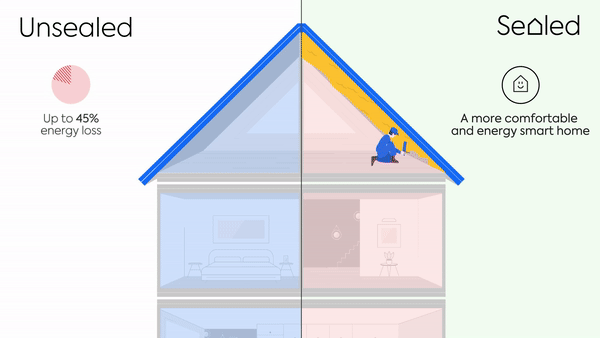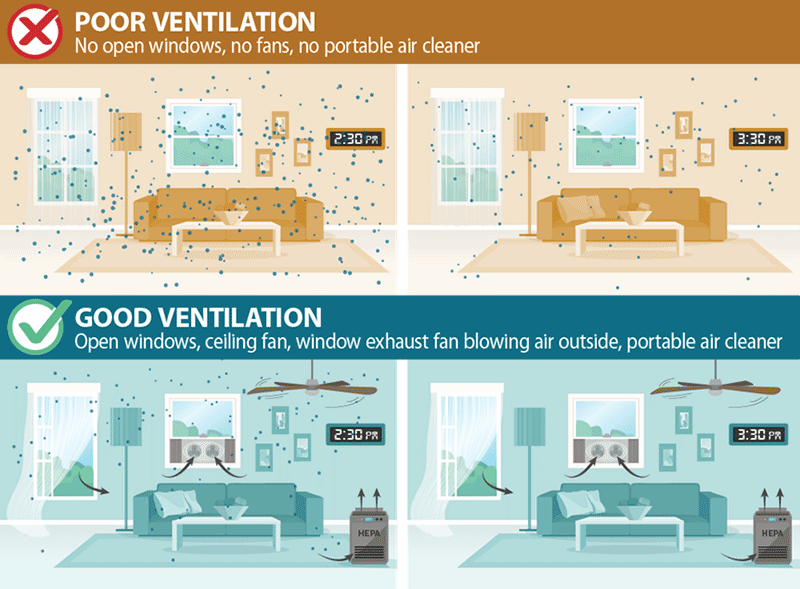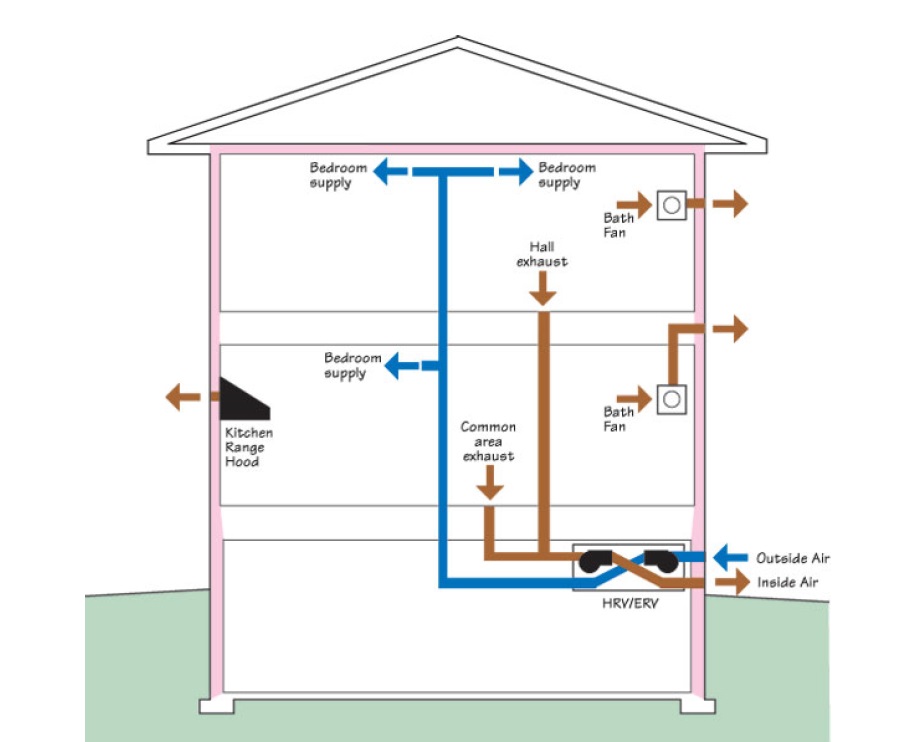Home Ventilation Melbourne: Cost-Effective Ways to Improve Airflow
Wiki Article
Understanding the Relevance of Home Air Flow for a Healthier Living Atmosphere
Home air flow plays a crucial function in maintaining a healthy and balanced living environment. It facilitates the exchange of outside and interior air, which is essential for improving air quality. Without appropriate air flow, homes can come to be breeding premises for toxins and allergens. The consequences of insufficient air flow can be substantial. This raises the query of just how property owners can properly implement air flow approaches to secure their health and wellness. Comprehending these approaches is imperative.
The Essentials of Home Ventilation
Home ventilation functions as a vital component of interior air high quality and convenience. It involves the process of exchanging stale indoor air with fresh outdoor air, therefore lowering moisture and regulating temperature. Appropriate ventilation systems can include natural approaches, such as open windows and vents, in addition to mechanical systems, such as exhaust followers and air exchangers. Reliable home ventilation aids stop issues like indoor mold and mildew development and the accumulation of unsafe bits. It likewise enhances total energy efficiency, as well-ventilated spaces can keep comfy temperatures with much less reliance on heating and cooling systems. Recognizing the basics of home air flow is essential for home owners seeking to create a healthier living setting on their own and their family members.
Common Sources of Indoor Air Air Pollution

Although several might not recognize it, indoor air contamination can stem from various sources within a household. Typical factors consist of unpredictable natural compounds (VOCs) sent out from paints, solvents, and cleansing items. Household appliances, such as gas cooktops and fireplaces, can launch hazardous gases like carbon monoxide and nitrogen dioxide. Additionally, mold and mold grow in wet locations, launching spores that affect air high quality. Animal dander, allergen, and pollen can collect indoors, additional worsening pollution degrees. Smoking cigarettes inside creates poisonous chemicals that stick around in the air. Ultimately, developing products, including asbestos and formaldehyde, can off-gas hazardous substances. Recognizing these sources is necessary for maintaining a much healthier indoor atmosphere and advertising efficient air flow approaches.
Health And Wellness Impacts of Poor Air Flow
Indoor air pollution can have substantial health and wellness effects, specifically when ventilation is insufficient. Poor air flow can cause the accumulation of hazardous pollutants, such as unpredictable natural substances, mold and mildew, and particulate matter. This accumulation may lead to respiratory system problems, consisting of bronchial asthma, allergies, and persistent obstructive lung disease. People may experience symptoms like headaches, tiredness, and irritation of the eyes, nose, and throat. Vulnerable populations, such as children and the elderly, go to greater threat for serious health and wellness results. Lasting direct exposure to improperly ventilated settings can additionally add to extra severe problems, including cardio illness. Guaranteeing correct air flow is vital for maintaining a healthy and balanced living setting and decreasing the threat of wellness problems connected with interior air pollution.Reliable Air Flow Strategies for Your Home
Appropriate ventilation is necessary for keeping a healthy interior atmosphere, and executing effective strategies can greatly enhance air high quality. Property owners can start by ensuring that exhaust followers are installed in shower rooms and kitchen areas to get rid of excess wetness and odors. Opening windows routinely enables fresh air to flow, particularly throughout light climate. In addition, using air purifiers with HEPA filters can aid record air-borne pollutants. For homes with heating and cooling systems, maintaining cooling and heating systems and transforming filters frequently is essential for peak efficiency. Integrating natural ventilation methods, such as cross-ventilation, can also enhance airflow. Sealing any kind of leakages in windows and doors stops unwanted drafts, which can disrupt regulated air movement, inevitably leading to boosted interior air top quality and comfort.Preserving Ideal Air Top Quality Year-Round
To maintain optimal air high quality year-round, homeowners must embrace an aggressive method to managing their interior atmosphere. Frequently keeping track of indoor air top quality is critical; this includes monitoring for toxins such as dust, mold and mildew, and unpredictable organic compounds (VOCs) Implementing reliable air flow systems, such as exhaust fans and air cleansers, can greatly reduce air-borne contaminants. Additionally, regular maintenance of a/c systems assurances peak efficiency and air circulation. House owners need to additionally consider moisture degrees, as too much wetness can result in mold and mildew growth. Seasonal changes might necessitate changes in air flow techniques to suit varying outside air top quality. By focusing on these practices, home owners can create like it a healthier living room, promoting overall well-being for all owners throughout the year.Frequently Asked Questions
How Can I Inform if My Home Demands Better Air Flow?
To figure out if a home requires better air flow, one need to observe indicators such more tips here as persistent moisture, mold development, stuffy odors, condensation on windows, or boosted allergic reaction symptoms, showing inadequate air movement and possibly inadequate interior air high quality.What Are the Signs of Poor Indoor Air Quality?

Can Houseplants Improve Indoor Air High Quality Efficiently?
The efficiency of houseplants in improving interior air high quality is disputed. While some research studies recommend they can absorb toxic substances and produce oxygen, their general impact might be marginal compared to correct air flow and air purification systems.Just how Typically Should I Change My Air Filters?
The frequency of air filter changes generally depends upon use and filter type. Generally, it is advised to replace filters every three months, though families with allergic reactions or pets might require even more constant adjustments for excellent efficiency.Are There Any Type Of Specific Air Flow Equipments for Allergy Sufferers?
Numerous ventilation systems, such as HEPA-filtered units, properly minimize allergens in the air. Home Ventilation Melbourne. These systems trap pet, plant pollen, and dirt dander, offering allergy sufferers with a cleaner, healthier interior setting while taking care of air quality efficiently
It helps with the exchange of outdoor and indoor air, which is vital for improving air quality. Home air helpful site flow serves as an important part of indoor air high quality and convenience. It includes the procedure of trading stagnant interior air with fresh outside air, thereby decreasing moisture and managing temperature. Interior air contamination can have substantial wellness implications, particularly when ventilation is poor. Appropriate air flow is essential for maintaining a healthy indoor environment, and carrying out efficient strategies can greatly enhance air top quality.
Report this wiki page